Search the Special Collections and Archives Portal
Search Results
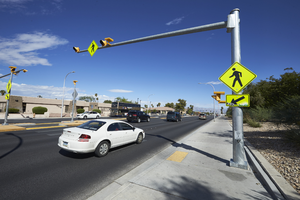
A crosswalk signal on South Eastern Avenue north of East Sahara Avenue looking north, Las Vegas, Nevada: digital photograph
Date
2017-09-13
Archival Collection
Description
A crosswalk signal on South Eastern Avenue north of East Sahara Avenue.
Image
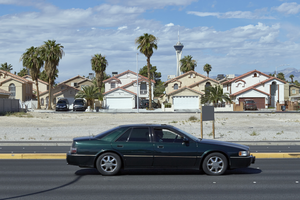
Homes on Stockton Avenue and vacant land on South Eastern Avenue north of East Sahara Avenue looking west, Las Vegas, Nevada: digital photograph
Date
2017-09-13
Archival Collection
Description
Single family homes on Stockton Avenue are seen behind an undeveloped parcel of land on South Eastern Avenue north of East Sahara Avenue as traffic flows by.
Image
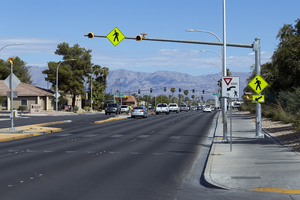
A crosswalk signal on South Eastern Avenue north of East Sahara Avenue looking north, Las Vegas, Nevada: digital photograph
Date
2017-09-13
Archival Collection
Description
A crosswalk signal on South Eastern Avenue north of East Sahara Avenue.
Image
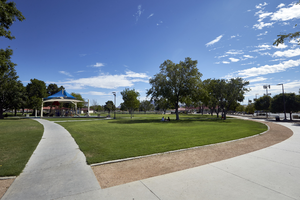
Walkways and open space in the Justice Myron E. Leavitt & Jaycee Community Park, Las Vegas, Nevada: digital photograph
Date
2017-09-13
Archival Collection
Description
The Justice Myron E. Leavitt & Jaycee Community Park off South Eastern Avenue north of East Sahara Avenue. The park is 18-acres and named after Justice Myron E. Leavitt, who was born in Las Vegas in 1930 and lived in the Jaycee Park area his entire life.
Image
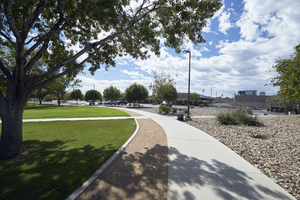
Walkways and open space in the Justice Myron E. Leavitt & Jaycee Community Park, Las Vegas, Nevada: digital photograph
Date
2017-09-13
Archival Collection
Description
The Justice Myron E. Leavitt & Jaycee Community Park off South Eastern Avenue north of East Sahara Avenue. The park is 18-acres and named after Justice Myron E. Leavitt, who was born in Las Vegas in 1930 and lived in the Jaycee Park area his entire life.
Image
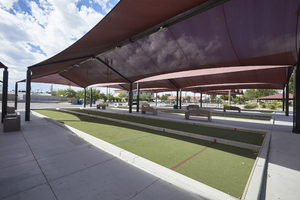
Bocce courts in the Justice Myron E. Leavitt & Jaycee Community Park, Las Vegas, Nevada: digital photograph
Date
2017-09-13
Archival Collection
Description
Bocce courts in the Justice Myron E. Leavitt & Jaycee Community Park off South Eastern Avenue north of East Sahara Avenue. The park is 18-acres and named after Justice Myron E. Leavitt, who was born in Las Vegas in 1930 and lived in the Jaycee Park area his entire life.
Image
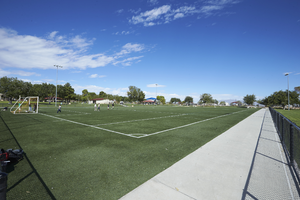
A soccer field in the Justice Myron E. Leavitt & Jaycee Community Park, Las Vegas, Nevada: digital photograph
Date
2017-09-13
Archival Collection
Description
A soccer field in the Justice Myron E. Leavitt & Jaycee Community Park off South Eastern Avenue north of East Sahara Avenue. The park is 18-acres and named after Justice Myron E. Leavitt, who was born in Las Vegas in 1930 and lived in the Jaycee Park area his entire life.
Image
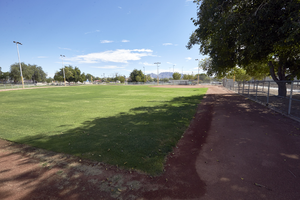
A baseball field in the Justice Myron E. Leavitt & Jaycee Community Park, Las Vegas, Nevada: digital photograph
Date
2017-09-13
Archival Collection
Description
A baseball field in the Justice Myron E. Leavitt & Jaycee Community Park off South Eastern Avenue north of East Sahara Avenue. The park is 18-acres and named after Justice Myron E. Leavitt, who was born in Las Vegas in 1930 and lived in the Jaycee Park area his entire life.
Image
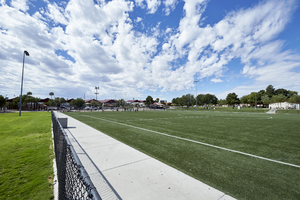
A soccer field in the Justice Myron E. Leavitt & Jaycee Community Park, Las Vegas, Nevada: digital photograph
Date
2017-09-13
Archival Collection
Description
A soccer field in the Justice Myron E. Leavitt & Jaycee Community Park off South Eastern Avenue north of East Sahara Avenue. The park is 18-acres and named after Justice Myron E. Leavitt, who was born in Las Vegas in 1930 and lived in the Jaycee Park area his entire life.
Image
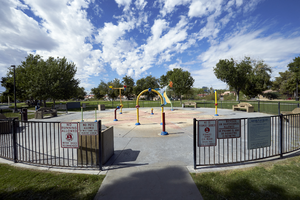
A water play area in the Justice Myron E. Leavitt & Jaycee Community Park, Las Vegas, Nevada: digital photograph
Date
2017-09-13
Archival Collection
Description
An idle water play area in the Justice Myron E. Leavitt & Jaycee Community Park off South Eastern Avenue north of East Sahara Avenue. The park is 18-acres and named after Justice Myron E. Leavitt, who was born in Las Vegas in 1930 and lived in the Jaycee Park area his entire life.
Image
Pagination
Refine my results
Content Type
Creator or Contributor
Subject
Archival Collection
Digital Project
Resource Type
Year
Material Type
Place
Language
Records Classification
